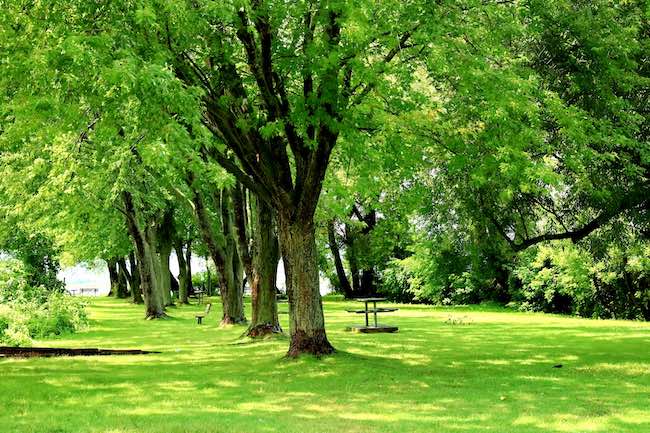
Lawn with a low soil pH and in a shady position
The first step is to carry out a quick soil test to determine the soil pH. If the soil pH in the lawn is low for example pH 5.8 as per the test so ideally needs to be raised to pH 6.0 to 6.1
Sprinkle a handful one the lawn one handful per square metre approx then wash in with a watering or it might rain. The lime should be granulated and easy to spread if its a powder be careful as it can be dangerous as a powder you need to wear gloves
Next in renovating a lawn is to create a seed bed on the bare areas by giving it a light rake with a wire rake. This will help to loosen up the soil and create an ideal environment for the new grass seeds to germinate.
Four days before sowing the seed, it is recommended to pre-chit the seed. To do this, take a kilo of grass seed and place it in a plastic bag. Then, add a couple of glasses of water and mix it well. Leave the bag in an airing cupboard for four days, making sure to check it daily and give it a shake to ensure even moisture distribution. Pre-chitting the seed will help to kickstart the germination process, giving you a better chance of success.
The grass seed species to use on a shady lawn should include Festuca rubra, poa nemoralis, Festuca species, and Tetraploid Dwarf Amenity Ryegrass. These species are ideal for a lawn in the UK and will provide a lush, green turf that is hard wearing and resilient.
Once the seed is sown, it is essential to roll or tread the area lightly to ensure good contact between the seed and soil. If the soil is too wet this can be left for another day. This will help the seed to germinate and establish quickly.
Next, lightly topdress the lawn with a lawn topdressing. This will help to level out any uneven areas and provide essential nutrients for the grass seedlings to grow.
Water the area for 14 days with a sprayline hose, making sure to keep the soil moist but not waterlogged. This will help to ensure good germination and establishment of the new grass seedlings.
Once the new grass seedlings have reached a height of around 20mm, it is time to cut the grass. Use a sharp mower and set the blades to a high level, around 50mm. This will help to avoid damaging the new seedlings and allow them to establish fully before mowing more regularly.
In addition to the above tasks, it is also important to fertilise the lawn regularly throughout the growing season. This will help to maintain healthy growth and provide essential nutrients for the grass. Use a slow-release lawn fertiliser with a balanced NPK ratio, applying it in spring and summer, and avoid fertilising during drought or hot weather.
Another important task is to aerate the lawn regularly, especially if it is heavily used or compacted. This can be done using a garden fork or aerator, which will help to improve soil drainage, reduce thatch buildup, and encourage deeper root growth.
Whilst the grass seed germinates and grows its ok to carefully walk on the lawn as long as the traffic is not two heavy
Lastly, it is essential to keep the lawn well-maintained by mowing regularly, removing any weeds or moss, and repairing any bare patches promptly. With proper care and attention, your lawn can become the envy of the neighbourhood, providing a lush, green oasis for you and your family to enjoy.
If the area of the lawn is in a very shade position its possible you might be better to try a clover lawn which is better suited to heavy shade here is a link





















